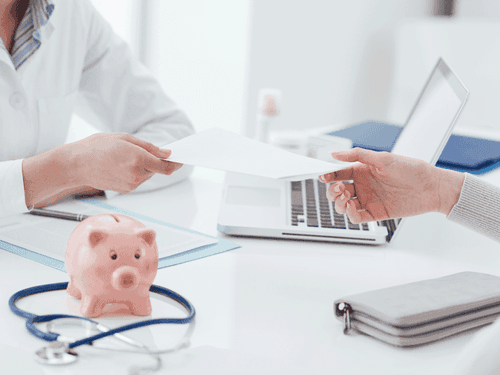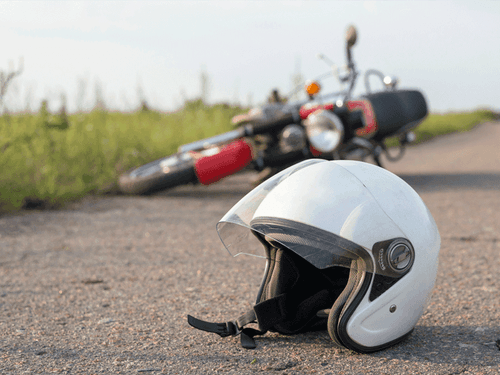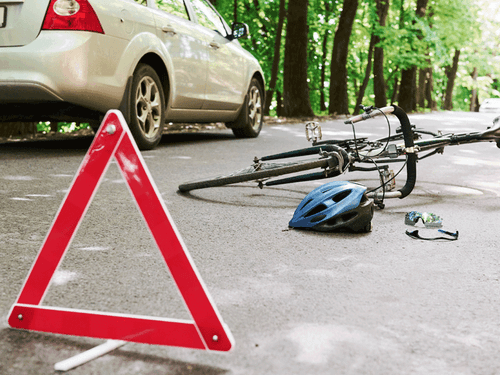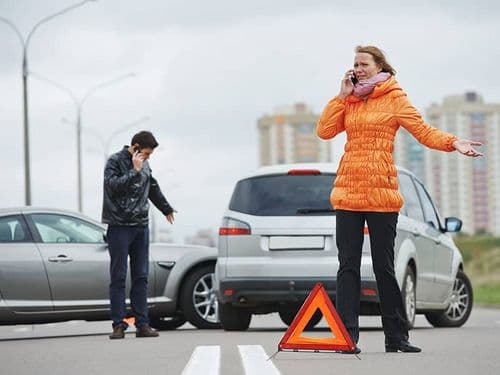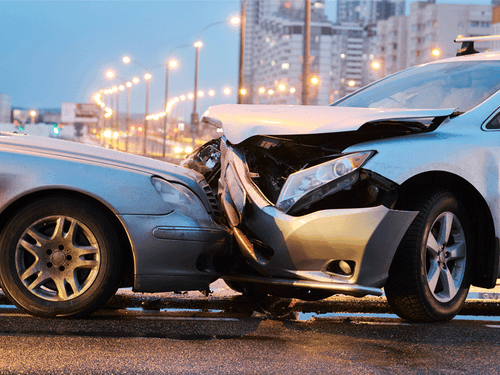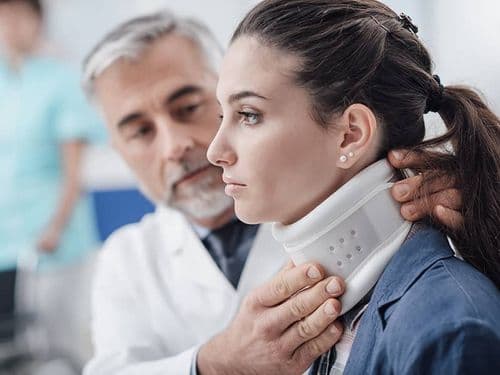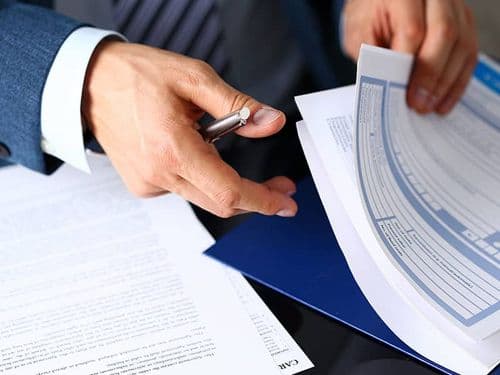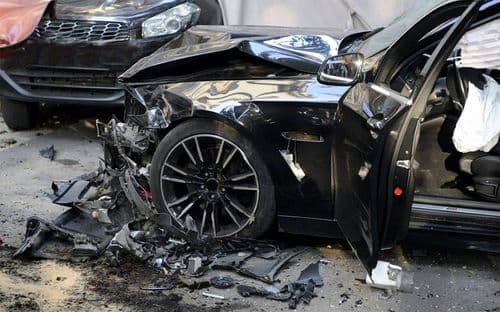Contrary to what most people think, medical care for road traffic accident victims is not free of charge. According to the law, it is the person at fault who has to pay the cost of the medical treatment received by the victims of the accident.
So if you have suffered a traffic accident and you have doubts about who is responsible for paying your medical expenses or which centre you can go to for treatment of your injuries, below we will try to answer all your questions.
Free public or private health care?
As a victim of a road traffic accident, you are entitled to receive the medical care you need to treat your injuries, either in a public or private hospital.
Generally, road accident compensation covers all physical and material damage sustained in an accident, including the costs of medical care, regardless of whether the centre that provided the care is public or private.
In the case of public health care, the injured party must provide the hospital with the details of the insurer of the vehicle responsible, and at the end of the treatment, he/she will be given an invoice that must be sent to his/her insurance company.
If, on the other hand, the victim of the accident prefers to go to a private medical centre, then he/she will have to pay all the costs out of pocket and then claim them from the insurance company responsible.
Who is responsible for payment according to the Conventions or Agreements?
By law, health centres have the right to claim from the insurer of the vehicle responsible for a traffic accident the payment of the cost of the medical care provided to the victims of the accident.
Injured people who are occupants or passengers of the vehicles involved in the accident will always be covered by the insurance companies and the Insurance Compensation Consortium. However, in the case of drivers, the responsibility for payment will depend on who caused the accident.
In this case, according to the Public and Private Agreements, the person obliged to pay the medical expenses is determined taking into account the assumptions that we will see below.
Accidents involving a single vehicle
When only one vehicle is involved in the traffic accident, the insurance company or, otherwise, the Insurance Compensation Consortium is responsible for paying for the medical care needed by the victims, except in the case of the driver of the vehicle. According to the Public Agreement, the expenses incurred for the medical care of the driver are included only up to a maximum amount that is established in the economic conditions of the Agreement.
Accidents involving more than one vehicle
In the event that more than one vehicle is involved in the traffic accident, the insurance company is obliged to bear the health care costs only for those occupants or passengers of the vehicle it insures, and also for its driver. In the event that the vehicle does not have Civil Liability Insurance, the Insurance Compensation Consortium will be responsible for the expenses of the victims who are not responsible for the accident.
Injuries to third parties who are not users of the intervening vehicles
If the traffic accident involves several vehicles and causes injuries to third parties, such as pedestrians or cyclists, then the insurance company of the injuring party or the Insurance Compensation Consortium is responsible for paying the costs of medical assistance to the injured parties.
If the injuries are the result of the displacement of containers, street furniture, etc., then the vehicle that has displaced them is liable to pay.
What are the Public and Private Health Care Agreements?
The first Health Care Agreements were signed decades ago to facilitate the management and claims between medical centres, insurance companies and the Insurance Compensation Consortium.
These are agreements signed between the health services of the Autonomous Communities, public hospitals, the Insurance Compensation Consortium and the UNESPA association representing private insurers.
Over the years, these agreements have been refined to extend their functions and coverage. At present there are several types of agreements, but the most important are those that affect both the public and private health care sectors. The versions currently in force are:
- The Agreement on public healthcare derived from traffic accidents for the years from 2022 to 2025
- The Framework Agreement on road traffic accident healthcare for the years 2022/2025 (private sector).
Which health centres should you go to?
After suffering a traffic accident, the first step is to go to the emergency services of any hospital, whether public or private.
If the injured person subsequently needs specific healing or rehabilitation treatment in order to heal or stabilise their injuries, then they can decide which type of medical centre they want to go to for this treatment. You have the following options:
- A public health centre. You will have to fill in a form with the details of the vehicles and the insurers involved in the accident, so that the hospital can bill the medical expenses to the insurance company.
- A hospital proposed by the insurer of the vehicle in which you were travelling or by the insurer of the other vehicle involved. In this case, the insurance company will be responsible for all treatment costs.
- A private health centre of the injured person's choice. If the injured person chooses a private centre, he/she will have to bear all the costs himself/herself and can subsequently claim them from the insurer of the vehicle that caused the accident. If the claim is not possible because he/she is at fault, it will be necessary to see in the insurance contract whether he/she can claim reimbursement.
- A centre adhered to the Private Health Care Agreement (UNESPA). The chosen centre will be the one that requests authorisation from the insurer and then invoices the insurer for the cost of the treatment. Here the injured party will not have to pay any advance payment.
Tips for coping with a traffic accident
If you are involved in a road traffic accident, there are two things that are essential in dealing with the situation:
- If you need specific treatment to recover from your injuries, always choose the medical centre that is best suited to your case, even if you have to pay for it initially. Remember that you can claim all the costs incurred from the insurer of the vehicle responsible for the accident.
- Seek the advice of a lawyer specialising in traffic accidents. He or she will help you to comply with all the deadlines and requirements established by law in order to claim fair compensation for the injuries, after-effects and material damage caused by the accident.
What should I do if I have suffered a traffic accident?
If you have been involved in a traffic accident, the first thing you should do is go within 72 hours to the emergency department of the nearest hospital or the hospital of your choice, so that they can assess the seriousness of your injuries and prescribe the most appropriate rehabilitation treatment to cure or stabilise them. It is important that you follow all medical instructions given to you, both for your recovery and if you want to claim compensation for a traffic accident.
Do I have to go to the care centre assigned by the insurance company or can I choose another one?
According to the Insurance Contract Law and Law 41/2002 on patient autonomy, when you suffer a traffic accident you have the right to choose the medical centre where you will receive rehabilitation for your injuries. You can opt for one of your preference or go to the centre recommended by the insurance company, indistinctly.
However, choosing the right rehabilitation centre is fundamental both for the recovery of the injuries, as well as for the process of claiming compensation afterwards. So, as always, seek specialist advice.
Who should pay for health care costs?
As we have already seen, in most cases medical assistance as a consequence of a traffic accident is universal and free of charge, although it is not the Seguridad Social that pays all these expenses, but the insurer of the vehicle responsible for the accident.
Insurance companies are obliged to pay for any medical expenses incurred by the victims of the accident. It is therefore essential to determine who is responsible for the facts, as it will be their insurer who will be responsible for payment.
In the event that the at-fault vehicle does not have a Civil Liability Insurance policy, then the Insurance Compensation Consortium will be responsible for paying the costs of medical care for those injured in the traffic accident.
What can I do if I have already paid for health care?
If you have had to bear and pay out of pocket the health care and rehabilitation costs required to recover or stabilise the injuries sustained in a traffic accident, you can ask the insurance company of the responsible vehicle to reimburse you for all the amounts you have paid by filing a traffic accident compensation claim.
In this type of compensation, there is a specific item intended to financially compensate the victim for all the health care expenses he or she has had to bear as a result of the accident.

